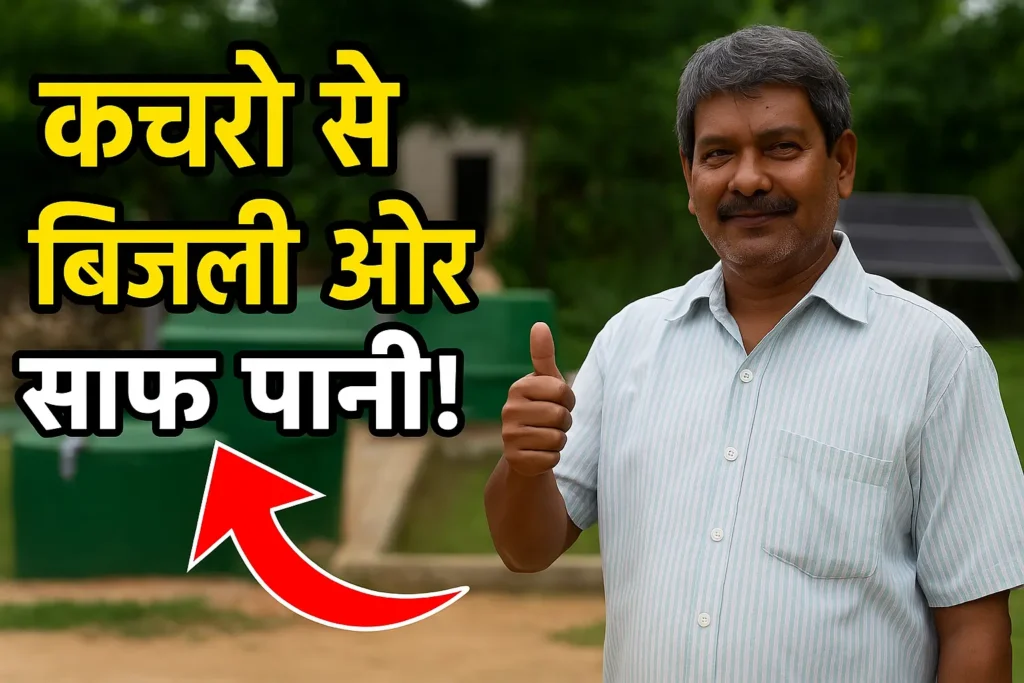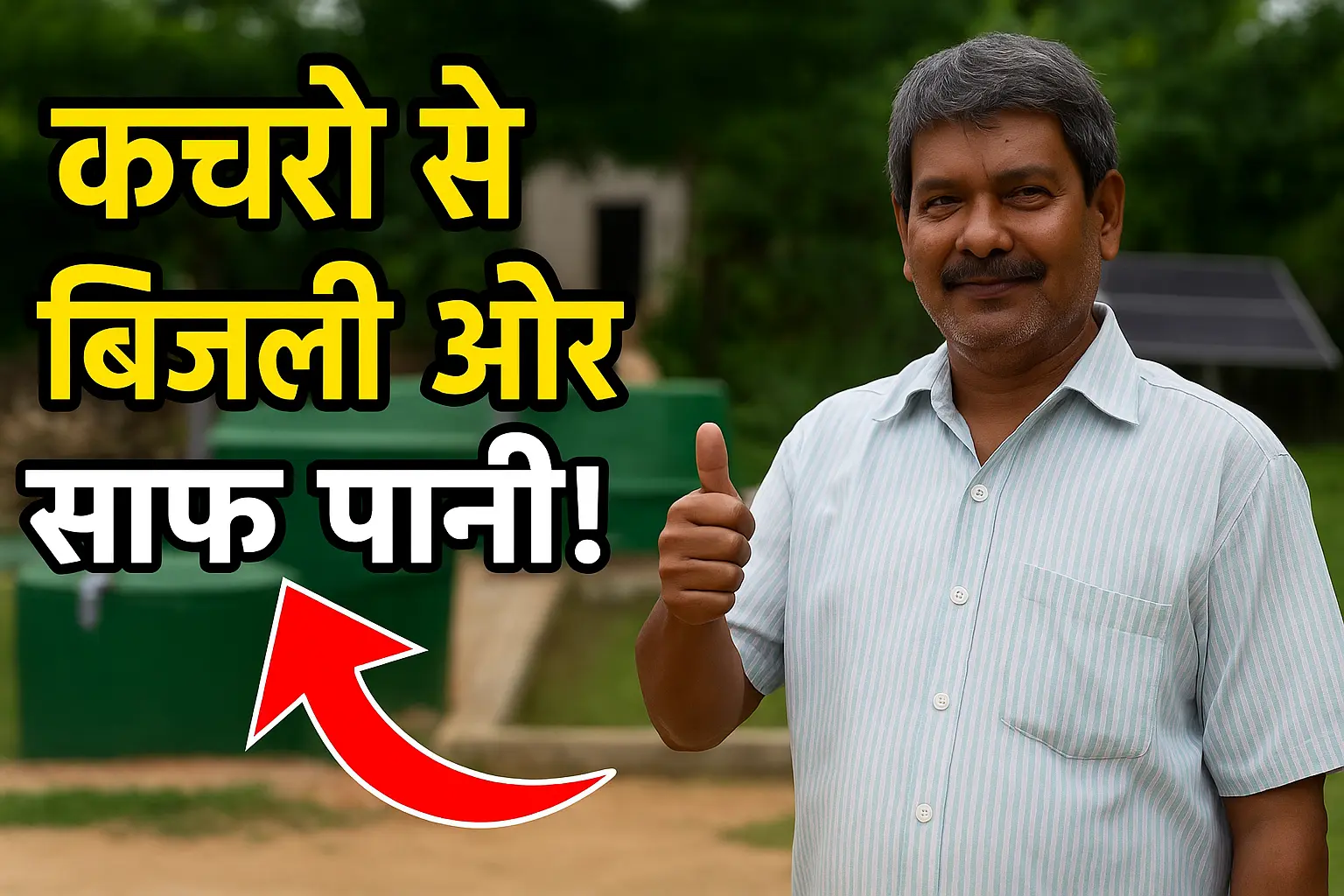We keep talking about progress, technology, and change — but how often do we hear these things happening in a village? Well, this time, something truly amazing is happening in a quiet place called Aandhi village, and we just had to tell you about it.
This village in Rajasthan is turning something as ordinary as waste into something powerful. We’re talking about electricity and clean water — yes, both! It’s not a city project or a government pilot that barely works. It’s a real, on-ground success that’s helping people live better.
And honestly, this is the kind of story that gives us hope.
What’s Happening in Aandhi Village?
Let’s start from the beginning. Aandhi is a small village that was facing some big problems — waste was piling up, power supply was unreliable, and clean drinking water was hard to come by.
Instead of waiting for outside help, the people of Aandhi decided to take things into their own hands. That’s when the Aandhi village waste project came to life.
Using leftover food, kitchen scraps, cow dung, and other everyday waste, the village set up a system that turns this waste into biogas and electricity. But that’s not all — they’re also using the same energy to power a system that filters and cleans water for the entire village.
Can you believe that? Waste going in, and clean energy and water coming out!
You Might Be Wondering, How Does It Work?
We’ll keep it simple. The villagers collect all kinds of organic waste from homes — things like food leftovers, banana peels, and animal waste. This is then put into a biogas unit, where it naturally breaks down and releases gases. These gases are then used to generate electricity.
That electricity is used to power lights, charge batteries, and most importantly — run a water purification unit.
This is how Aandhi is producing clean water from waste, without using diesel generators or outside electricity. Everything is local, eco-friendly, and affordable.
It’s a simple setup, but it’s solving real problems.

Why This Project Is a Game-Changer for Rural India
We’ve all seen villages struggling with bad roads, limited electricity, and unsafe drinking water. So when a place like Aandhi comes up with its own solution, it becomes something worth sharing.
This isn’t just about one village. It’s an example of rural waste to energy India — a model that can be copied in thousands of places across the country.
Aandhi shows us that:
Waste doesn’t have to be a problem — it can be a resource
Clean energy is possible without big money or big machines
Villagers can manage and maintain systems themselves with proper training
Water can be made safe with simple, powered filters using energy from waste
So many solutions packed into one project — that’s what makes this special.
What Do the People Say?
The best part of this story isn’t just the technology. It’s the people.
One schoolteacher in the village told visitors, “Earlier, we used to burn waste outside the school. Now that same waste gives light to our classrooms.”
A mother said, “Our children used to fall sick from the dirty water. Now they drink clean water every day.”
And these aren’t just quotes. This is the real impact of a project that works at ground level. It’s helping health, education, the environment, and even employment. Some villagers have been trained to run the system and earn a small income from it. That’s another layer of benefit that’s hard to ignore.
How Is This Different from Other Projects?
You may be thinking, “Okay, but aren’t there other villages doing clean-up drives and stuff?” Yes, some are. But what makes the Aandhi village waste project different is that it’s not a one-day thing or just for show.
It’s a fully working system that:
Runs every day
Involves the whole village
Has proper training and roles
Gives clear results like power and water
Has support but not dependence on outside funding
That’s why this story is not just about cleaning up waste. It’s about turning waste into a working resource.
And isn’t that the kind of smart thinking we need more of?
Can This Be Done in Other Villages?
Absolutely. In fact, that’s the main reason we’re sharing this story.
What’s happening in Aandhi can happen in your village, too. You don’t need big land or a massive budget. You just need people willing to come together, a little training, and the right kind of support.
There are already talks of using this model in other places. Some nearby villages have visited Aandhi to learn how it works. Local leaders, NGOs, and even officials are showing interest. That’s how one good idea spreads — quietly but surely.
So if you’re someone who cares about change, this is a great place to start.
Final Thoughts — A Lesson in Real Innovation
Sometimes, the biggest ideas come from the smallest places. Aandhi may not have skyscrapers or shiny buildings, but it has something better — self-belief and action.
By turning their daily waste into clean power and clean water, they’ve not only cleaned up their village but also created a model that could change lives in hundreds of other places.
And to us, that’s what real progress looks like.
So next time someone says, “What can one small village do?” — tell them the story of Aandhi. Tell them how waste became light and clean water in a place that simply decided to try something new.
Sounds simple, right? But sometimes, the simplest things are the most powerful.
